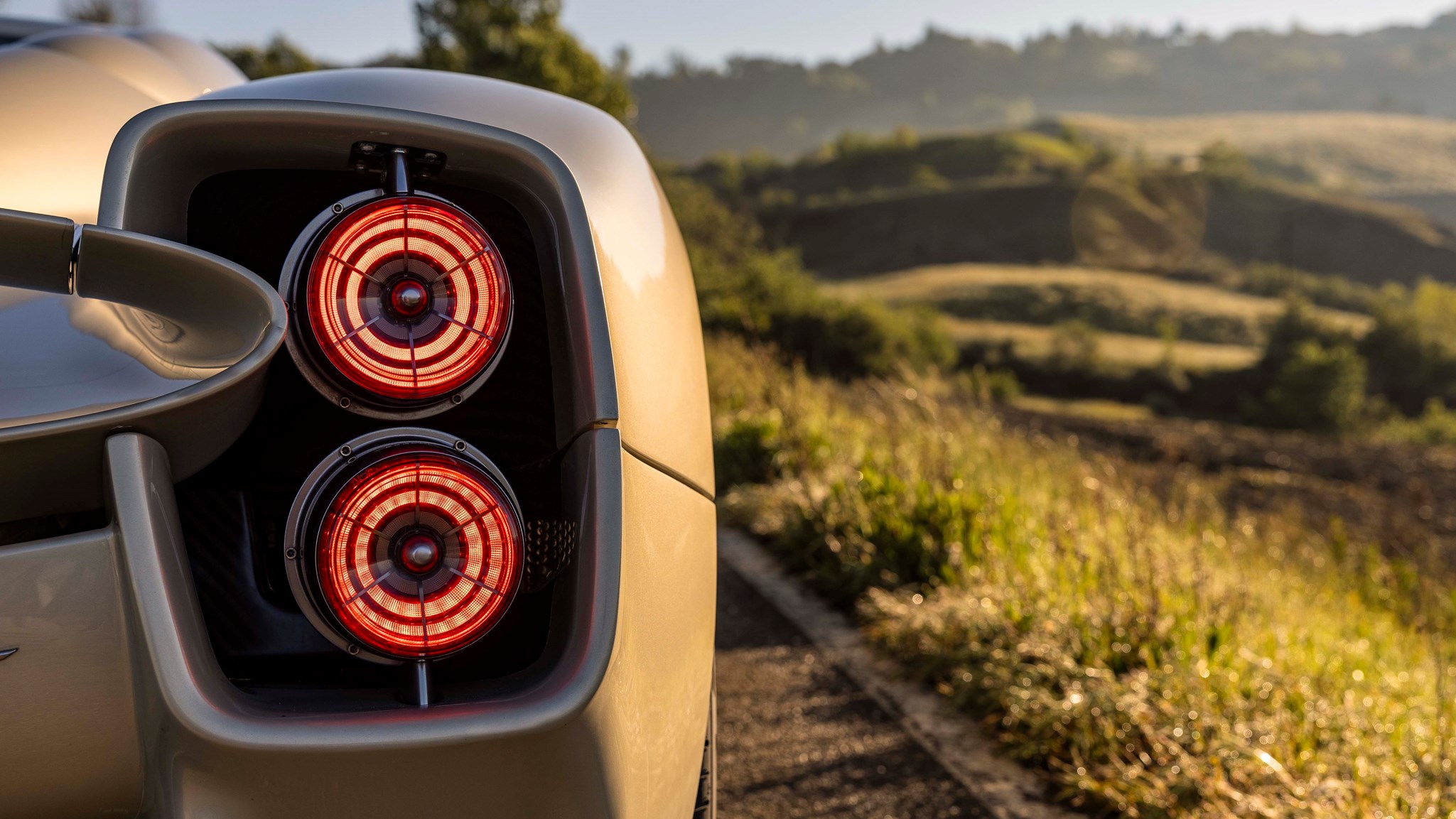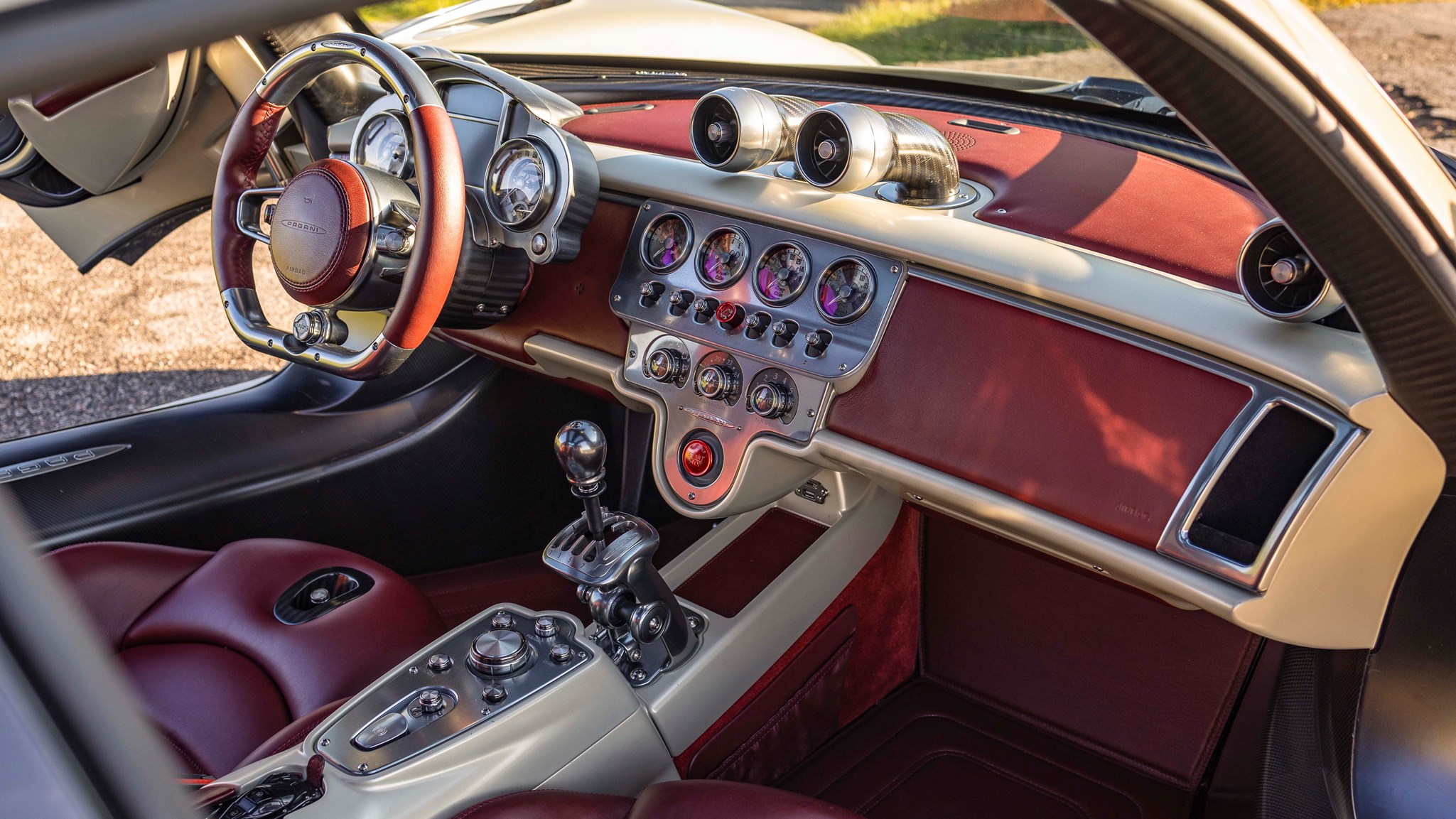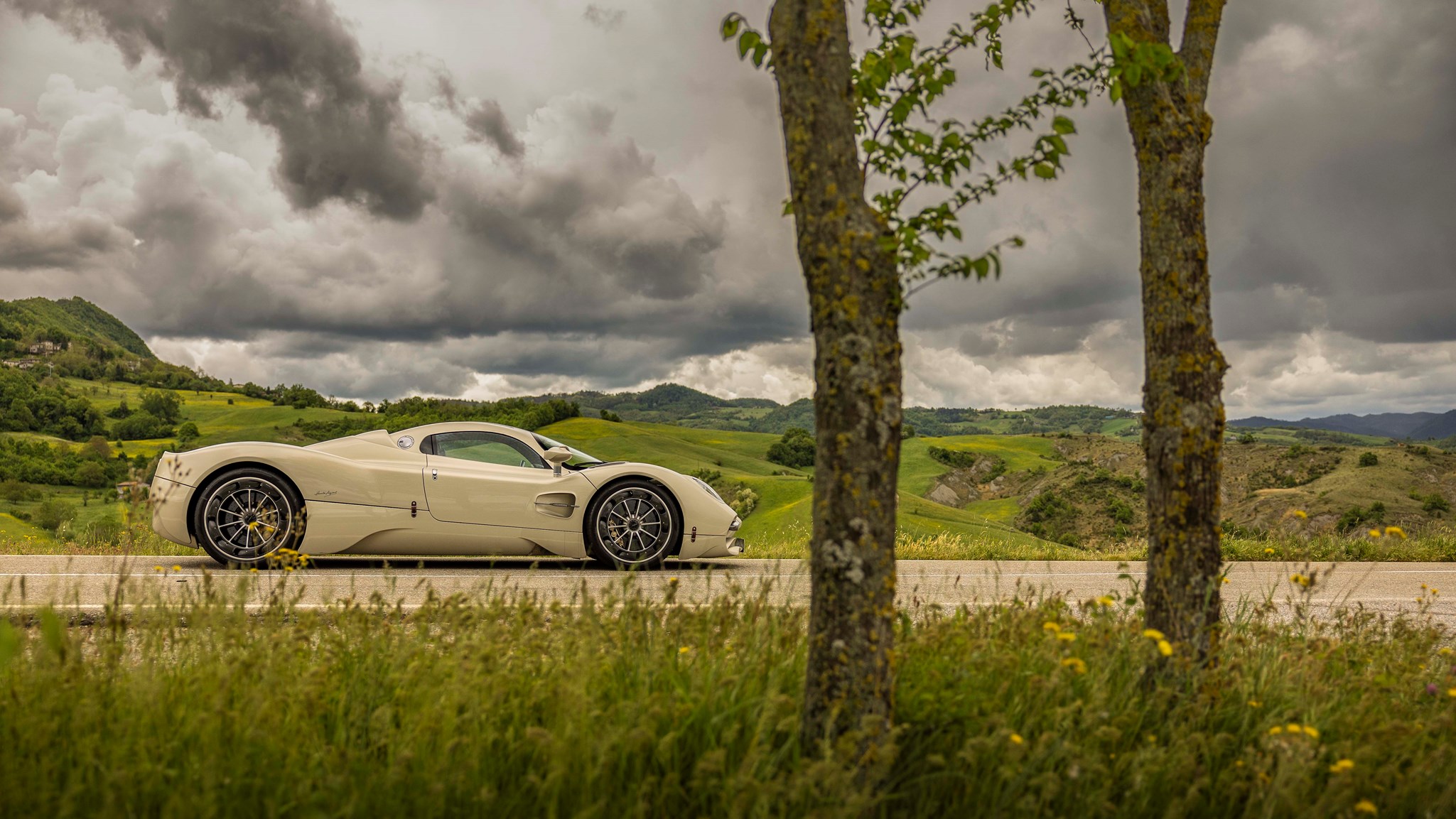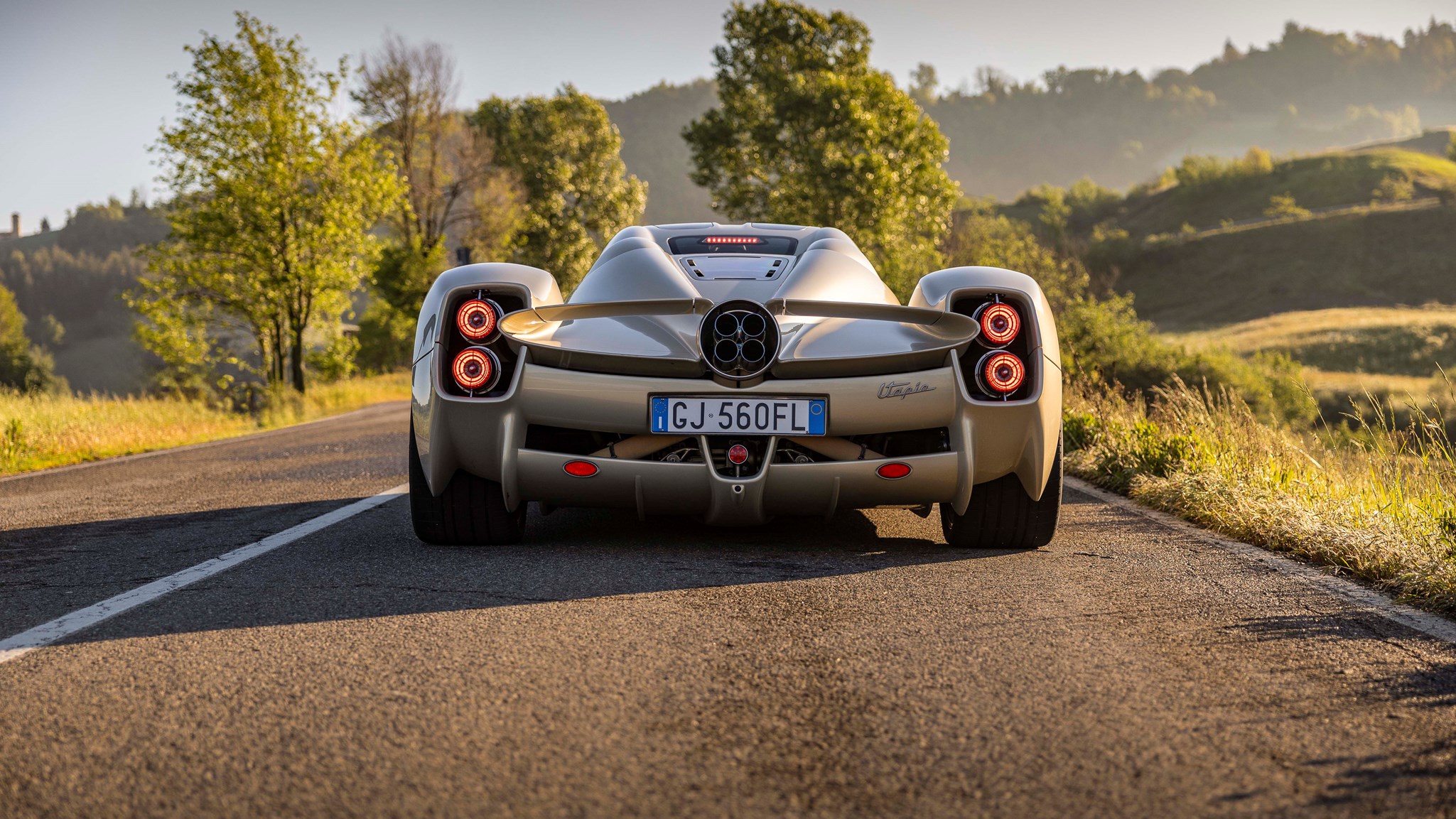► £2.2 million, limited to 99 cars
► 6.0-litre twin-turbo V12 + 852bhp
► Seven-speed manual gearbox an option
The Pagani Utopia is a supercar’s supercar. Loud, ludicrously quick, jaw-dropping to look at and just a little bit scary to drive, it’s the modern-day embodiment of the cars we dreamed of in the back of GCSE maths class. It’s rare, too. When was the last time you saw a Pagani on the road? Probably not recently – Pagani only launches a new model every decade or sov and even then the numbers are – initially at least – kept in double figures.
Why? Well, Pagani isn’t like Ferrari or Lamborghini. They may be based a mere stone’s throw away from each other, but the business model is very different. Rather than produce thousands of high-end goods a year, Horatio Pagani creates the ultimate car for his very small but very discerning list of customers and charges them an eye-watering sum for it – £2.2 million in the case of the Utopia. The result? Keep reading to find out our verdict on the incredible Pagani Utopia.
What’s under the skin?
The Utopia – pronounced ooo-tow-peeeyah – uses a monocoque chassis made with the catchily named carbon-titanium HP62 G2 and carbo-triax HP62 (otherwise known as extremely strong composites), with front and rear tubular subframes fashioned from chromium-molybdenum. The result? Torsional rigidity is up 10.5% versus previous Pagani road vehicles while kerb weight is just 1,280kg. For context, a Ferrari 296 GTB weighs over 1,600kg…

With such modest mass, you’d think Pagani might be able to cut a few corners on the engine – perhaps downsize a little. Not a bit of it… The Utopia’s 6.0-litre twin-turbocharged AMG V12 (producing 852bhp and 811lb ft of torque) is totally unique even among today’s throng of exotic supercars and produces its magic without a drop of hybridisation. There’s no AWD, either, and while a seven-speed automated manual gearbox is available, there’s also the option for a seven-speed manual – unheard of on a new car with this level of performance.
What’s with the design?
It’s probably not a stretch to say that the Utopia is the most outrageous looking supercar on sale today. Like a curvier, more filled-out Zonda, its looks initially took a while to truly sink in when this writer saw the first pictures, but in the flesh? Utterly sensational. The shape, the presence, the level of detail – all out of this world. There’s a strong argument that the Zonda is still the prettiest Pagani, but there’s no denying how special the Utopia looks in 2024.
For the exterior, there’s been a very deliberate effort to keep the basic shape free of any protruding aero addenda that would spoil the overall lines. Therefore, things like the cooling ducts are integrated into the bonnet and front splitter, while the rear clamshell provides the perfect mounting point for the active aero rear spoiler. Meanwhile, the wheels feature carbon turbine blades that direct hot air away from the brakes and reduce turbulence underneath the car. Oh, and they wear specially designed tyres – Pirelli PZero Corsa 265/35 R21, 325/30 R22 front and rear – with the outline of the Utopia moulded into the sidewall.

Among other countless details are the mirrors. They hang delicately away from the rest of the body, their form partly resembling an elegant snowdrop, yet there’s also a clear high-speed aerodynamic benefit to their unusual design. Other noteworthy items include the rear lights – suspended in the air extracts and resembling those from a 1950s Ford Thunderbird – and the ceramic coated titanium quad exhaust (the whole system weighs just 6kg), as seen on Paganis since the beginning.
The design elements throughout the car all lead back to Horatio Pagani’s Da Vinci-inspired belief that art and science are as one. There’s no form follows function or vice versa with the Utopia. Horatio explains that, for the exterior design of the car ‘it is never purely a matter of style, a second stage after its technical development. In any case, that would be impossible. It is because the car fulfils a precise aerodynamic purpose that is has this shape and none other.’
As for the interior, the 1950s design theme continues and there’s no surprise that it does away with the common trend for huge touchscreens dominating the fascia. Instead, you’ve got one digital display in front of the driver (Apple CarPlay and Android Auto compatible) and the rest is made up of an exquisite selection of dials. Peer closely into the rev counter and speedo and you’ll even see a window into the watch-like cogs within.

Both the gear gaiter and steering wheel are made out of machined aluminium alloy – a process that Pagani does in-house since recently acquiring the CNC plant that’s supplied parts to the company since the Zonda S. Incredibly, the steering wheel starts off as a 43kg solid block of aluminium alloy and, after 30 hours’ worth of machining, comes out as a 1.7kg solid steering wheel rim.
Does it drive as good as it looks?
According to Horatio Pagani, the primary objective for the Utopia was to deliver ‘great simplicity and greater control in driving the car’ – as requested by his most loyal clients. Also note that ‘not one of them, for example, wanted more electronics’.
A throwback supercar, then? Not quite. For while a twin-turbocharged V12 thoroughbred would likely take your head off or – at the very least – leave you with blistered thumbs and bleeding ears back in the 90s, the Utopia is altogether far more civilised to drive.
Regardless of which drive mode you’re in (there’s four – Comfort, Sport, Race and Wet), the ride is firm but still supple and able to work with the undulations of the road surface. There’s even a ‘supersoft’ mode (think Ferrari bumpy road mode) that can be independently activated in any of the drive settings. Also, the clutch and steering are light and easy to use, while the nose has zero issues clearing most speed bumps even without activating the lifter.

What’s more, when driven, the car feels significantly smaller than its exterior form suggests – this partly down to the excellent driving position. In fact, the biggest pain when piloting the Utopia is the dog-leg gearbox. While the sentiment is understandable, you question the logic of fitting a car (that most owners will only drive infrequently) with a transmission pattern different to the vast majority of modern manuals.
Thankfully, the sheer levels of torque on offer – from as little as 2,800rpm – mean there’s little need to row through the short ratios of the seven-speed box should you wish not to. During our test drive, we were able to cruise easily at 30mph in 5th gear, with the car then pulling cleanly upon heavy throttle. Oh, and there’s no lane-keep assist because Pagani’s low production numbers mean they’re not obliged to fit it – hoorah!
And when you start to drive it like a supercar?
Utterly spellbinding. It’s brilliantly clear right from the off that this is simply not like any other modern supercar. There’s ESC and ABS, but other than that you’re pretty much left to your own devices. The steering isn’t as quick, nor does it have quite the same manufactured positivity as Ferrari’s finest, but it feels far purer as a result. There’s a wonderful clarity to how the act of turning the wheel is translated to the direction of the car and it allows you to exploit the handling despite the obvious intimidation factor.
Front end grip felt virtually unbreakable on the tight, switchback-laden road we spent most of our time on and while a mechanical limited-slip differential might have seemed the more obvious choice, the electronic diff does a sound job of giving you rotation without snapping your head off.

The engine plays its part in all of this beautifully, yet there’s no denying its boosty delivery also keeps you on your toes. Even in a straight line, the manual box means you’re required to work for the speed. Pagani doesn’t quote a 0-62mph time which is reasonable given it’s largely down to how quickly you can change gear, but we reckon a sub three-second run is possible with an experienced driver (and a spare clutch).
Changes of ratio come thick and fast. It’s very quick to rev and the red line is at 6,700rpm with peak power just 700rpm earlier. It’s an entirely different feel to the V12 of Pagani’s neighbours in Maranello, yet despite the lack of 9,000rpm crescendo it’s no less special. The sound is fierce but mournful and – from the cabin at least – about as loud as you’d realistically want.
Verdict
The overall experience of the Utopia is a beguiling mix of old-school supercar thrills with enough civility to suggest there’s a subtle hint of grand tourer in its dynamics. And yet, rather than draw parallels, it’s the kind of car that’s best appreciated for its individuality.
Among the selection of today’s supercars, none combine the Utopia’s level of performance, extravagance, purity and exclusivity (only 99 will be made) for the simple reason that no other manufacturer could feasibly build a car like this in 2024. The experience of seeing one in the flesh, let alone driving it is truly special and Pagani’s determination to meld art and science in a way few others can shines through all aspects of the car. With such limited numbers, it will only be a dream for most, but what a dream to have.

Photography by Lee Brimble